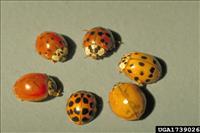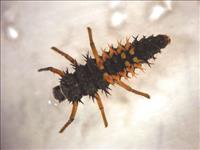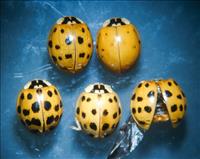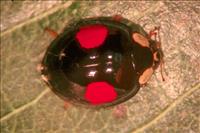| |

Caption: The many colors of the Multi-colored Asian lady beetle.
Photo by: Bill Ree, Texas A&M University, Bugwood.org
|

Caption: The larvae of the Multicolored Asian Lady Beetle are predaceous on aphids.
Photo by: M. Bush
|

Caption: Multicolored Asian Lady Beetle comes in many forms including red spots on black wings.
Photo by: J. Vanden Houwen, WSU Extension
|

Caption: Dark form of Multicolored Asian Lady Beetle, Harmonia axyridis
Photo by: M. Bush
|
